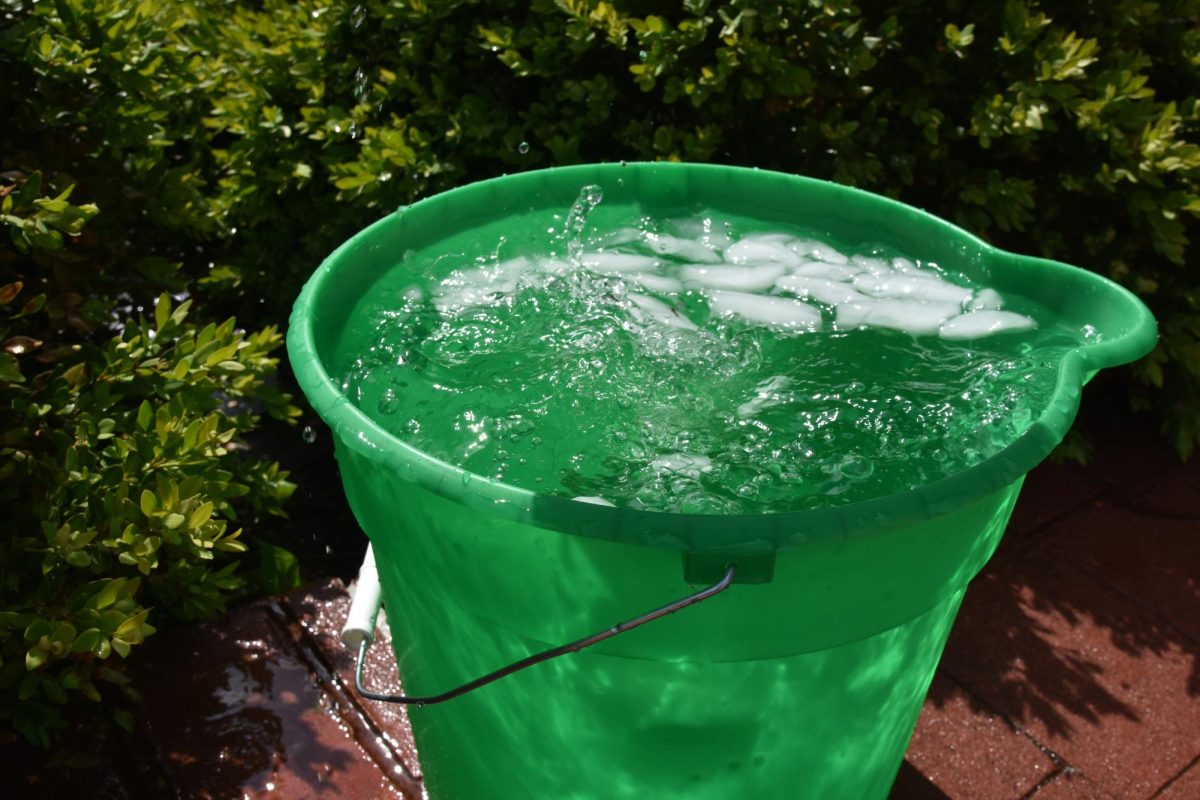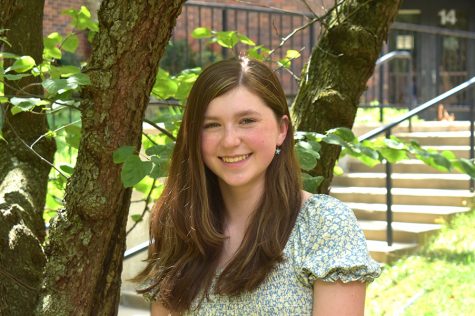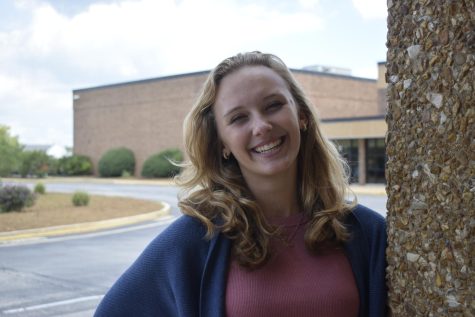Assistant Principal Kate Piffel sits at her desk, a phone balanced next to her ear. An overstuffed black binder lays open on her desk and she reads something from it, listening thoughtfully to the response from the person on the other end of the phone. Piffel is fulfilling the latest part of her job: contact tracing.
Contact tracing is a method used to determine close contacts and alert them of the need to quarantine after they are exposed to COVID-19. St. Louis County Health Department and Center for Disease Control and Prevention (CDC) guidelines recommend a 14-day quarantine period following close contact with an individual who tested positive or exhibited symptoms.
“Contact tracing provides the information to make decisions about isolation and quarantine. The isolation of positive cases and quarantine of those exposed slows the spread of COVID-19. It is very important to the health of our community,” school nurse Lois Burch said.
Burch described the importance of alerting school health officials as soon as symptoms begin or a test comes back positive. This allows them to begin the contact tracing process to curb any further spread.
“The difficulty is that contact tracing is time-consuming. There are several questions such as when symptoms start or date of positive test that are important to contact tracing,” Burch said. “Through discussion about what symptoms are present, where the individual has been, who they have been in contact with, the distance of the person with COVID-19 from others and the amount of time they have been together, we determine who will need to quarantine.”
Sophomore Alice Rashce is familiar with this process, having been quarantined herself in early November, as one of 57 students who tested positive during in-person learning.
“When my second rapid test came back positive, my doctor and the school nurse advised me of the quarantine procedures and [about] having to quarantine from school and sports for 14 days,” Rasche said. “I was very bored, tired and unmotivated and the 14 days of quarantining did not go by very quickly. I was frustrated because I had to miss out on my first two weeks of high school swim practice and in-person learning,” Rasche said.
Piffel, who does contact tracing alongside Burch and Athletic Director Brian Kessler, described what happens after they receive word of a case like Rasche’s.
“[If someone] tested positive and was in the building 48 hours prior to symptoms developing, they are contagious. Dr. Mitchell and Mrs. Lowenstein assist us by getting seating charts and attendance and determining how far apart students and staff were from a positive case,” Piffel said. “I then create a chart of all students [and] staff who were considered a close contact, within six feet of a positive case for a cumulative 15 minutes over 24 hours, and share that with grade-level offices, so we can start calling parents and pulling students from class as they need to be quarantining.”
Piffel learned to contact trace from an online course through Johns Hopkins University, which she took over the summer in preparation for a return to in-person learning. She outlines a few steps for students and staff to keep them safe as well as to make the contact tracing process easier.
“Wearing a mask and wearing it appropriately, over the mouth and nose. If you’re not eating at lunch, I know it’s really nice to be able to have the mask off, but if you’re not eating, having the mask back on [can help],” Piffel said. “Washing your hands, limiting your bubble; I really do believe it’s about social distancing 100%, keeping that mask on and keeping your bubble small.”
Piffel noted the behind the scenes work that goes into the process, from filling out Google Forms of quarantine data for every isolated individual to Mitchell measuring the distance between desks to determine who needs to isolate.
“This is my job now. For me personally, it can be difficult, because I’m the principal of the junior class. I want to be helping my kids and helping them to think about the future and focusing on them. When we get word of a case, it can take a large chunk [of time], if not all day. I’ll get calls and emails on the weekends and at night and I like to have my downtime. I’m not a principal 24/7 so that can be tough,” Piffel said.
Piffel and the other contact tracers adhere to St. Louis County guidelines for quarantining, meaning that students and staff must stay home for 14 days after being exposed to a positive case, even if they test negative during that time.
“The risk of exposure could kill somebody. It’s a little risk, but we’re not going to diminish that. I don’t want anybody to die on my watch, that’s how I’m taking it. [COVID-19 is] very serious [for] people with health conditions [and] it affects everybody differently, so I just want to make sure that all of our students and staff are safe,” Piffel said.



![Principal Jeremy Mitchell measures the distance between desks to aid in contact tracing. After measuring the desks, Mitchell gave the information to Assistant Principal Kate Piffel, who used seating charts to determine close contacts. “Dr. Mitchell measures the desks to see how far apart they are because if they are within six feet [there is a] 98% chance that those students are going to have to quarantine if they're that close to another student,” Piffel said.](https://pwestpathfinder.com/wp-content/uploads/2021/02/DSC_0011-900x600.jpg)
![Smiling in a sea of Longhorns, Fox 2 reporter Ty Hawkins joins junior Darren Young during the morning Oct. 3 pep rally. The last time West was featured in this segment was 2011. “[I hope people see this and think] if you come to [Parkway] West, you will have the time of your life because there are so many fun activities to do that make it feel like you belong here. I was surprised so many people attended, but it was a lot of fun,” Young said.](https://pwestpathfinder.com/wp-content/uploads/2025/10/Edited2-1200x798.jpg)
![West High seniors and families listen as a representative of The Scholarship Foundation of St. Louis, Teresa Steinkamp, leads a Free Application for Federal Student Aid (FAFSA) workshop. This session, held in the library, provided guidance on financial aid, scholarships and student loan options. “This event is very beneficial for any seniors who are applying to or considering applying to colleges after high school [because] the cost of college is on the rise for seniors and parents,” college and career counselor Chris Lorenz said.](https://pwestpathfinder.com/wp-content/uploads/2025/09/DSC_4478-1200x778.jpg)
![Senior Kamori Berry walks across the field during halftime at the Homecoming football game on Sept. 12. During the pep assembly earlier that day, she was pronounced Homecoming Queen. “I thought it was nice that the crowd [started] cheering right away. I know [my friends] were really excited for me, and my family was happy because typically non-white people don't win,” Berry said.](https://pwestpathfinder.com/wp-content/uploads/2025/09/DSC7046-Enhanced-NR-1200x798.jpg)



![Pitching the ball on Apr. 14, senior Henry Wild and his team play against Belleville East. Wild was named scholar athlete of the year by St. Louis Post-Dispatch after maintaining a high cumulative GPA and staying involved with athletics for all of high school. “It’s an amazing honor. I feel very blessed to have the opportunity to represent my school [and] what [it] stands for,” Wild said.](https://pwestpathfinder.com/wp-content/uploads/2025/05/unnamed-6-1200x714.jpg)
![The Glory of Missouri award recipients stand with their certificates after finding out which virtue they were chosen to represent. When discovering their virtues, some recipients were met with contented confirmation, while others, complete surprise. “I was not at all surprised to get Truth. I discussed that with some of the other people who were getting the awards as well, and that came up as something I might get. Being in journalism, [Fellowship of Christian Athletes and] Speech and Debate, there's a culture of really caring about truth as a principle that I've tried to contribute to as well. I was very glad; [Truth] was a great one to get,” senior Will Gonsior said.](https://pwestpathfinder.com/wp-content/uploads/2025/04/Group-Glory-of-Missouri.jpg)


![Sophomore Aleix Pi de Cabanyes Navarro (left) finishes up a soccer game while junior Ava Muench (right) warms up for cross country practice. The two came to Parkway West High School as exchange students for the 2025-2026 school year. “The goal for the [exchange] program is to provide opportunities for both Parkway students and our international exchange students to learn about other cultures, build connections and become confident, capable, curious and caring — Parkway’s Four C’s — in the process,” Exchange Program Lead Lauren Farrelly said.](https://pwestpathfinder.com/wp-content/uploads/2025/10/Feature-Photo-1200x800.png)
![Leaning on the podium, superintendent Melissa Schneider speaks to Parkway journalism students during a press conference. Schneider joined Parkway in July after working in the Thompson School District in Colorado. “My plan [to bond with students] is to get things on my calendar as much as possible. For example, being in [classes] is very special to me. I am trying to be opportunistic [meeting] kids [and] being in [the school] buildings. I have all the sports schedules and the fine arts schedules on my calendar, so that when I'm available, I can get to them,” Schneider said.](https://pwestpathfinder.com/wp-content/uploads/2025/09/IMG_5425-1200x943.jpeg)
![Gazing across the stage, sophomore Alexis Monteleone performs in the school theater. The Monteleone family’s band “Monte and the Machine” has been releasing music since 2012, but Alexis started her own solo career in 2024 with the release of her first single, Crying Skies. “My whole family is very musical, [and I especially] love writing [songs with them],” Monteleone said.](https://pwestpathfinder.com/wp-content/uploads/2025/09/DSC7463-1200x798.jpg)
![Leaping through the air, senior Tyler Watts celebrates his first goal of the season, which put the Longhorns up 1-0 against the Lafayette Lancers. Watts decided to play soccer for West for his last year of high school and secured a spot on the varsity roster. “[Playing soccer for West] is something I had always dreamed of, but hadn’t really had a good opportunity to do until now. It’s [really] fun being out [on the field], and I’m glad I decided to join the team. It’s just all about having fun with the boys and enjoying what time we have left together,” Watts said.](https://pwestpathfinder.com/wp-content/uploads/2025/09/DSC_1951-1200x855.jpg)

![Junior Fiona Dye lifts weights in Strength and Conditioning. Now that the Trump administration has instituted policies such as AI deregulation, tariffs and university funding freezes, women may have to work twice as hard to get half as far. "[Trump] wants America to be more divided; he wants to inspire hatred in people,” feminist club member and junior Clara Lazarini said.](https://pwestpathfinder.com/wp-content/uploads/2025/05/Flag.png)
![As the Trump administration cracks down on immigration, it scapegoats many immigrants for the United States’ plights, precipitating a possible genocide. Sophomore Annabella Whiteley moved from the United Kingdom when she was eight. “It’s pretty scary because I’m on a visa. When my visa expires next year, I’m not sure what’s going to happen, especially with [immigration] policies up in the air, so it is a concern for my family,” Whiteley said.](https://pwestpathfinder.com/wp-content/uploads/2025/05/DSC_0077-7copy.jpg)
![Shifting global trade, President Donald Trump’s tariffs are raising concerns about economic stability for the U.S. and other countries alike. “[The tariffs are] going to pose a distinct challenge to the U.S. economy and a challenge to the global economy on the whole because it's going to greatly upset who trades with who and where resources and products are going to come from,” social studies teacher Melvin Trotier said.](https://pwestpathfinder.com/wp-content/uploads/2025/05/MDB_3456-1200x800.jpg)
![Red, white and blue, the American flag holds the values of our democracy. The fight that we once endured has returned, as student journalists and senior correspondents across the country are losing their voices due to government control. “[Are] the White House and [the] government limiting free speech [and] freedom of the press? Yes [they are],” chief communications officer of the Parkway School District and former journalist Elisa Tomich said.](https://pwestpathfinder.com/wp-content/uploads/2025/03/Untitled-design-14.jpg)
![Freezing in their position, the Addams Family cast hits the “rigor mortis” pose after cast member and senior Jack Mullen, in character as Gomez Addams, calls out the stiff death move. For the past four months, the combined company of cast members, orchestra pit, crew and directors all worked to create the familial chemistry of the show. “I’m excited for [the audience] to see the numbers, the music, the scenes, but I also just love all the technical aspects of it. The whole spectacle, the costumes, makeup and the people that put in the work backstage in order to make the show successful on stage. I’m excited for people to see and appreciate that,” Mullen said.](https://pwestpathfinder.com/wp-content/uploads/2025/03/DSC0116-1200x800.jpg)


B Rasche • Feb 22, 2021 at 8:57 am
Nice story Ellie. The behind-the-scene efforts to complete contact tracing are significant and very underreported. As a Parkway West family we have been very pleased with the Administration’s communication processes and overall handling during this pandemic.